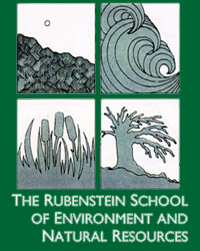Hogback Mountain Conservation Association
Route 9, Marlboro, Vermont
Preserving a Mountain Treasure
Natural History Internship
"There is new life in the soil for every man. There is healing in the trees for tired minds and for our overburdened spirits, there is strength in the hills,
if only we will lift up our eyes. Remember that nature is your great restorer."
-Calvin Coolidge, Jul. 25, 1924


Introduction
Hello! My name is Amie Schiller, and I’m a Wildlife and Fisheries Biology major at University of Vermont. This summer, I decided to further develop my understanding of ecology and integrated conservation through an internship with the Hogback Mountain Conservation Association (HMCA).
Although I hail from the bordering town of Brattleboro, Vermont- I spent a great deal of my childhood on Hogback Mountain. I grew up hiking the beautiful trails with my friends and family, and savoring every stop we would make at the visitor's center to enjoy the changing foliage every fall. In retrospect, it's this appreciation and great love of the area that brought me back to run a study on plant communities this summer.
Project Overview
The purpose of this study is to document plant community composition in three different habitat types that commonly occur on the mountain. I decided that plant communities should serve as the focal point of the study, because plants are very responsive and revealing indicators of habitat quality. In addition, they affect and are affected by many different abiotic factors (temperature, rainfall, natural disasters) as well as biotic factors (wildlife grazing patterns, breeding ground use) that amalgamate to determine the unique characteristics of each habitat or niche.
Studying plant specimens to evaluate habitat quality is a practice adopted by many scientists today, because individuals are static (therefore easy to study for prolonged amounts of times), resilient (to roughness and disturbance by the hands of the researcher) and perennial (therefore will generally regrow every summer unless they are disturbed or killed off).
I carried out this study by first establishing three different plots in swamp, meadow, and wood habitats. Then I visited the plots three times, (with a period of thirty three days separating each visit,) and documented all vegetation present at each plot. I made one additional visit to document plot orientation, general location, soil composition, percent cover and depth to bedrock data. Generally, the data collected during these different visits, will be combined and examined to "paint a hollistic picture" of each habitat type.
Please feel free to explore the data I collected in each habitat type, by selecting the habitat type below:
Internship Sponsors:



This internship was developed thanks to sponsorship from the Kate Svitek Memorial Foundation. A link to the foundation's website, may be found at:
http://www.katesvitekmemorial.org/
Academic support was provided by the Rubenstein School at the University of Vermont.
Additionally, I want to thank the Hogback Mountain Conservation Association for sponsoring this internship. However, I'd like to give a special thanks to Bob Anderson and Diana Todd for supporting me throughout this project.